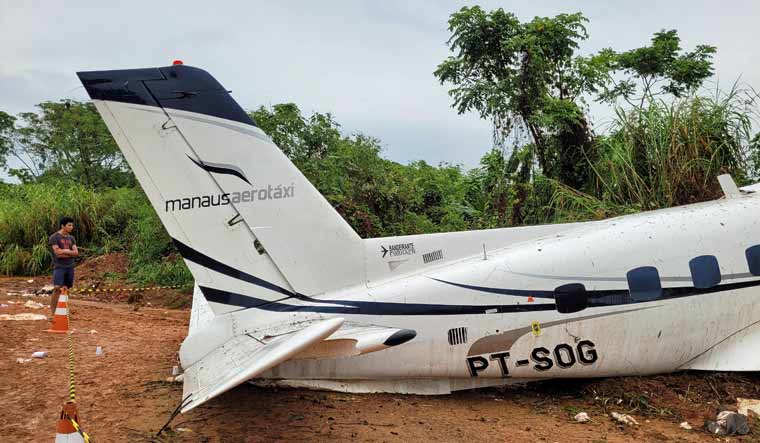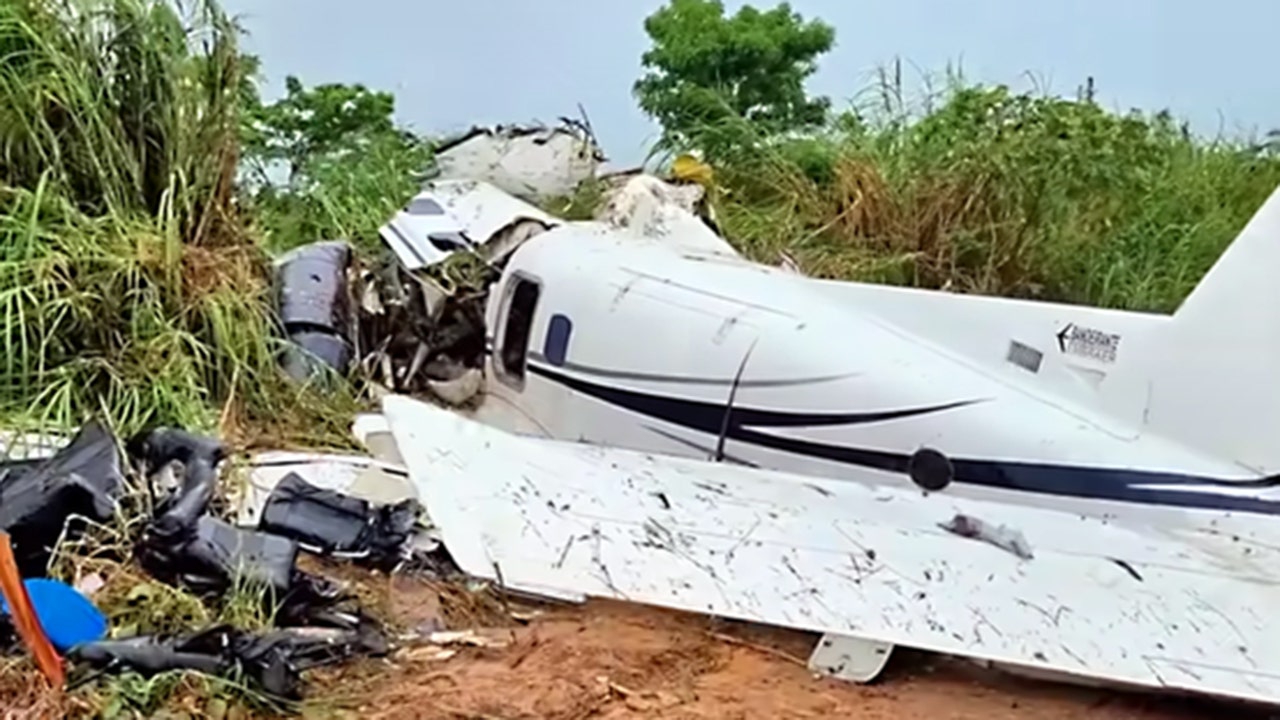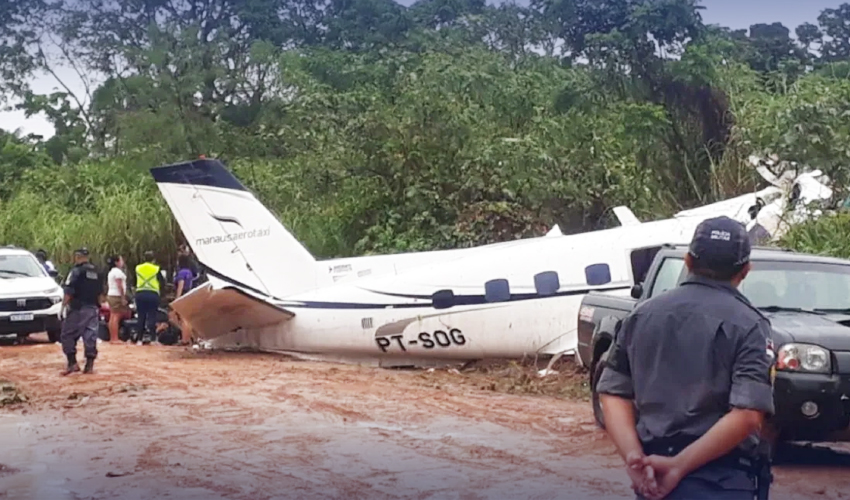History of Plane Crashes in Brazil: Brazil Plane Crash Type

Brazil, a nation renowned for its vibrant culture, diverse landscapes, and bustling cities, has unfortunately also witnessed a significant number of plane crashes throughout its history. These tragic events have left an indelible mark on the country, prompting investigations, safety improvements, and a constant pursuit of preventing future accidents. This section explores the history of plane crashes in Brazil, examining key events, contributing factors, and any discernible patterns.
Timeline of Major Plane Crashes
This section provides a timeline of major plane crashes in Brazil, encompassing notable events that have shaped the country’s aviation safety landscape.
- 1946: Cruzeiro do Sul Flight 107: On January 14, 1946, a Douglas DC-4 aircraft operated by Cruzeiro do Sul crashed into the Serra da Mantiqueira mountain range in São Paulo state, killing all 24 passengers and crew members. This accident was attributed to poor weather conditions and the pilot’s decision to fly through a storm.
- 1961: VARIG Flight 831: On September 29, 1961, a Lockheed Constellation aircraft operated by VARIG crashed into the Atlantic Ocean near Fernando de Noronha, killing all 27 passengers and crew members. The cause of the crash remains unknown, but theories include mechanical failure and pilot error.
- 1973: Varig Flight 820: On November 3, 1973, a Boeing 707 aircraft operated by VARIG crashed into the Andes Mountains in Chile, killing all 59 passengers and crew members. The crash was attributed to a combination of factors, including pilot error, poor weather conditions, and the aircraft’s lack of an altitude warning system.
- 1982: Transbrasil Flight 402: On September 11, 1982, a Boeing 727 aircraft operated by Transbrasil crashed into a mountain in São Paulo state, killing all 137 passengers and crew members. The crash was attributed to pilot error and a failure to adhere to proper procedures during an approach in poor weather conditions.
- 1989: TAM Airlines Flight 402: On July 31, 1989, a Fokker F28 Fellowship aircraft operated by TAM Airlines crashed into a building in São Paulo, killing all 96 passengers and crew members. The crash was attributed to pilot error and a failure to properly execute a landing maneuver.
- 2006: Gol Transportes Aéreos Flight 1907: On September 29, 2006, a Boeing 737-800 aircraft operated by Gol Transportes Aéreos collided in mid-air with a Legacy 600 business jet over the Amazon rainforest, killing all 154 passengers and crew members on the Gol aircraft. The crash was attributed to pilot error and a failure to adhere to air traffic control instructions.
- 2007: TAM Airlines Flight 3054: On July 17, 2007, an Airbus A320 aircraft operated by TAM Airlines crashed at São Paulo-Congonhas Airport, killing all 189 passengers and crew members. The crash was attributed to a combination of factors, including pilot error, poor weather conditions, and a lack of runway overrun protection.
Types of Plane Crashes in Brazil

Brazil, with its vast geographical expanse and extensive air travel network, has unfortunately witnessed a significant number of plane crashes throughout its history. These crashes have resulted in tragic loss of life and raised concerns about aviation safety in the country. Understanding the different types of plane crashes that have occurred in Brazil is crucial for identifying potential contributing factors and implementing measures to prevent future accidents.
Mechanical Failure
Mechanical failures can range from engine malfunctions to problems with aircraft control systems. These issues can arise due to faulty manufacturing, inadequate maintenance, or wear and tear over time. In some cases, mechanical failures can be exacerbated by extreme weather conditions or improper handling by pilots.
The crash of TAM Airlines Flight 3054 in 2007, which resulted in the deaths of 199 people, was attributed to a combination of mechanical failure and pilot error. The aircraft, a Boeing 737-800, experienced a hydraulic failure during takeoff, which caused it to lose control and crash into a hangar at São Paulo’s Congonhas Airport.
Pilot Error
Pilot error is a significant contributing factor in many aviation accidents, including those in Brazil. This can include mistakes in navigation, communication, decision-making, or flight control. Factors such as fatigue, distraction, or lack of experience can also play a role in pilot error.
The crash of Gol Transportes Aéreos Flight 1907 in 2006, which killed 154 people, was attributed to pilot error. The aircraft, a Boeing 737-800, collided in mid-air with an Embraer Legacy 600 business jet. The Gol flight crew failed to notice the Legacy aircraft on their radar and did not take any evasive action.
Weather Conditions, Brazil plane crash type
Severe weather conditions, such as thunderstorms, heavy rain, or fog, can pose significant challenges to aircraft operations and contribute to accidents. These conditions can affect visibility, create turbulence, and cause icing on aircraft surfaces.
The crash of Avianca Flight 052 in 1988, which killed 142 people, was attributed to a combination of weather conditions and pilot error. The aircraft, a Boeing 707, was attempting to land at Bogotá’s El Dorado International Airport during a severe thunderstorm. The pilots lost control of the aircraft and it crashed into a mountainside.
Terrorism
While relatively rare, acts of terrorism have also contributed to plane crashes in Brazil. These incidents can involve hijacking, sabotage, or other deliberate acts of violence.
The crash of Transbrasil Flight 402 in 1973, which killed 13 people, was attributed to a bomb planted on board the aircraft. The incident was claimed by a left-wing revolutionary group.
Impact of Plane Crashes on Brazil

Plane crashes in Brazil have had a profound and lasting impact on the country, leaving behind scars that run deep into its social fabric, economic landscape, and political consciousness. These tragedies not only claim precious lives but also disrupt transportation networks, damage infrastructure, and cast a long shadow over the aviation industry and public perception of air travel.
The Human Cost
Plane crashes in Brazil have resulted in a significant loss of life, leaving families devastated and communities in mourning. These tragedies often involve a large number of casualties, as Brazil is a vast country with a bustling air travel network. The impact on families extends beyond the immediate grief; the loss of a breadwinner can lead to financial hardship and social instability. For instance, the crash of TAM Airlines Flight 3054 in 2007, which claimed the lives of 199 people, left a deep wound on the nation’s collective memory.
Economic Disruptions
Beyond the human toll, plane crashes have significant economic consequences for Brazil. The disruption of air travel can cripple businesses, affecting tourism, trade, and transportation of goods. The costs of repairing damaged infrastructure, compensating victims and their families, and investigating the cause of the crash can strain public resources. The closure of airports and airspace can lead to delays and cancellations, further impacting economic activity. For example, the crash of Gol Airlines Flight 1907 in 2006, which resulted in the deaths of 154 people, caused significant disruptions to the country’s air travel network.
Political Responses
Plane crashes have prompted the Brazilian government and aviation authorities to implement stricter safety regulations and enhance investigative procedures. The focus has been on improving aircraft maintenance, pilot training, and air traffic control systems. The government has also invested in research and development to enhance aviation safety technologies. Following the 2007 TAM Airlines crash, the government established the National Civil Aviation Agency (ANAC) to oversee and regulate all aspects of civil aviation in Brazil. ANAC has implemented numerous safety measures, including stricter pilot licensing requirements, increased oversight of aircraft maintenance, and improved communication protocols.
Long-Term Effects
Plane crashes have had a long-term impact on the Brazilian aviation industry and public perception of air travel. The industry has faced increased scrutiny and pressure to improve safety standards, leading to significant investments in training, technology, and infrastructure. The public, however, may experience a lingering fear of air travel, leading to a decline in passenger numbers and a shift towards alternative modes of transportation. These tragedies can also lead to public distrust of the aviation industry and government oversight, requiring significant efforts to rebuild confidence.
Brazil plane crash type – Brazil has unfortunately experienced a number of tragic plane crashes, often attributed to factors such as weather conditions, maintenance issues, or pilot error. One notable example is flight 2283 , which highlighted the importance of rigorous safety protocols and thorough investigations to prevent similar occurrences.
The investigation of such crashes in Brazil has consistently aimed to identify root causes and implement measures to improve aviation safety standards.
The investigation into the Brazilian plane crash type, a tragic event that garnered international attention, revealed a complex interplay of factors contributing to the disaster. While the focus naturally shifted to the immediate causes, it’s important to remember that even seemingly unrelated events can have ripple effects.
For instance, the career trajectory of alex highsmith , a rising star in the NFL, exemplifies how individual success can inspire others and potentially influence the broader cultural landscape. This connection, though seemingly tenuous, highlights the interconnectedness of human experiences and the need for a holistic approach when analyzing complex events like the Brazilian plane crash.
